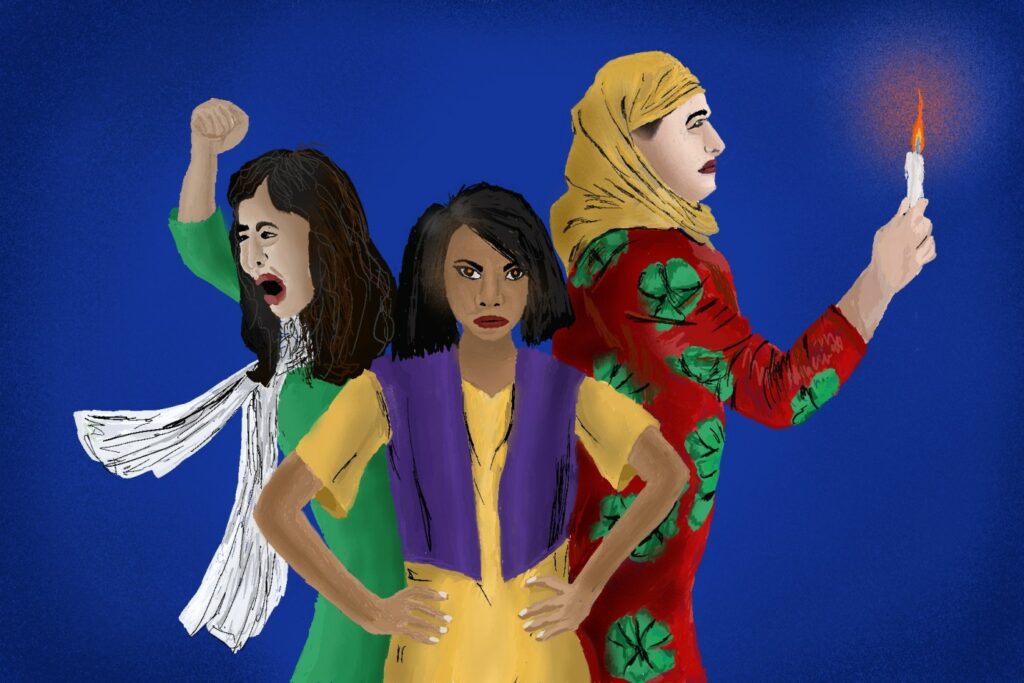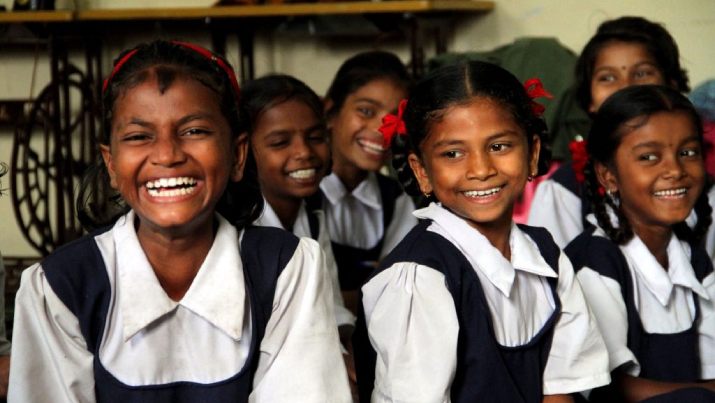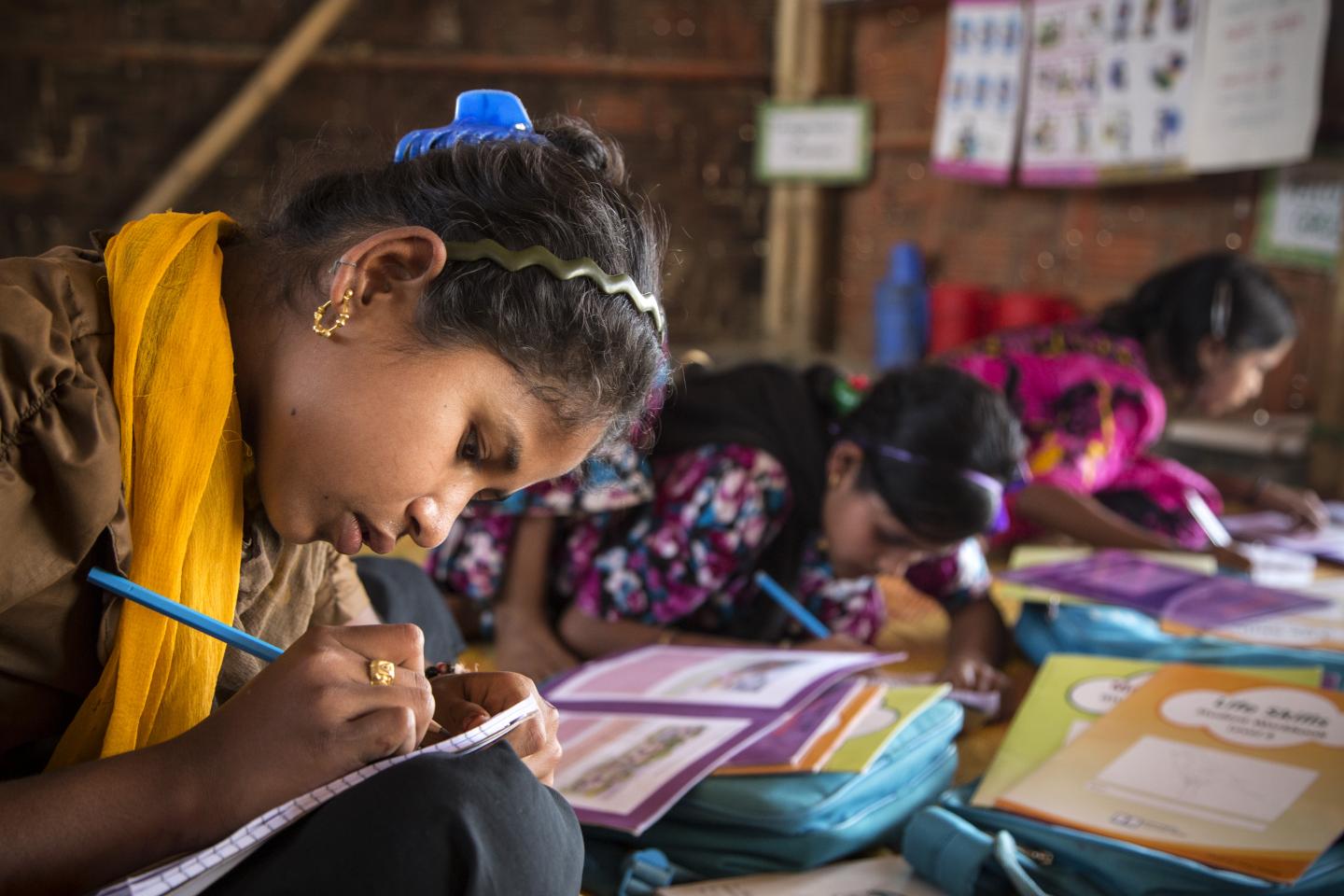Education is a fundamental human right, but for millions of girls and women around the world, this right is denied due to a multitude of barriers. Two of the most significant barriers are gender discrimination and the lack of access to proper sanitation facilities. These issues disproportionately affect girls and women in developing countries and can have devastating consequences, denying them the opportunity to reach their full potential and contribute to their communities. Closely looking at the devastating reality of women and girls being denied education due to gender discrimination and poor sanitation and the impact this has on their lives and communities and examining the initiatives and strategies that have been implemented to break down these barriers and promote gender equality and education for all.
Over 130 million girls worldwide do not attend school, with over 60% of them residing in sub-Saharan Africa and South Asia, according to UNESCO. These startling numbers demonstrate the ongoing fight for gender equality in education. Girls’ lack of education not only maintains gender inequality but also impedes the social and economic advancement of these areas. To achieve sustainable development goals, governments and organisations should place a high priority on ensuring that girls have access to education.
Over 130 million girls worldwide do not attend school, with over 60% of them residing in sub-Saharan Africa and South Asia, according to UNESCO. These startling numbers demonstrate the ongoing fight for gender equality in education. Girls’ lack of education not only maintains gender inequality but also impedes the social and economic advancement of these areas. To achieve sustainable development goals, governments and organisations should place a high priority on ensuring that girls have access to education.
Gender-based discrimination is one of the main reasons why girls are denied their right to an education. In many communities, boys are given priority when it comes to receiving an education, while girls are seen as a burden or a source of income. The expectations placed on girls to stay at home and assist with household duties rather than attend school are reinforced by cultural norms and traditions.

Because many schools lack even the most basic security measures, girls are particularly susceptible to violence and harassment. This puts girls at risk for physical and sexual assault, which could result in their dropping out of school. A report from the Malala Fund estimates that 130 million girls worldwide have dealt with gender-based violence at some point in their lives. The report also emphasizes that the risk of violence against girls is higher for girls from marginalised communities and that the COVID-19 pandemic has made matters worse by forcing schools to close.
Also Read: Ground Report: ‘Savitri Ka Vidyabagh’ Shows The Way To Fight Child Labour And Promote Education
The lack of facilities for sanitation and hygiene in classrooms is another significant obstacle to girls’ education. Girls in developing nations are at risk of contracting infections or having menstrual hygiene issues because many schools lack clean and secure restrooms. Lack of facilities can cause girls to skip school or drop out because they are too ashamed or uncomfortable to do so while having their periods. This not only has an impact on their education but also reduces their chances of success in the future. To advance gender equality and guarantee that all children have access to a high-quality education, schools must have adequate sanitation facilities.
In India, an estimated 23 million girls drop out of school each year because there aren’t enough facilities for menstrual hygiene. In addition to affecting these girls’ educational opportunities and future, this problem also supports gender inequality. To solve this issue, governments and organizations must prioritize the installation of adequate sanitary facilities in classrooms. During their periods, many girls are compelled to use unhygienic and dangerous materials like rags, leaves, or even ash, which can cause health issues and absenteeism.
For instance, in India, an estimated 23 million girls drop out of school each year because there aren’t enough facilities for menstrual hygiene. In addition to affecting these girls’ educational opportunities and future, this problem also supports gender inequality. To solve this issue, governments and organizations must prioritize the installation of adequate sanitary facilities in classrooms. During their periods, many girls are compelled to use unhygienic and dangerous materials like rags, leaves, or even ash, which can cause health issues and absenteeism.

Due to the increased likelihood of early marriage, pregnancy, and poverty for girls who drop out of school, this problem not only affects their education but also their prospects for the future. To empower girls and enhance their general well-being, it is essential to provide access to menstrual hygiene facilities and education. Additionally, addressing menstrual hygiene management in schools can help promote gender equality and reduce the stigma associated with menstruation. We can enable girls to realise their full potential and act as change agents in their communities by providing a secure and encouraging environment for them.
According to recent statistics, discrimination based on gender and a lack of hygienic conditions prevent millions of girls from accessing education worldwide. According to a UNESCO report, there are still 130 million or so girls who are not enrolled in school worldwide. This number is especially high in South Asia and sub-Saharan Africa, where cultural and social norms frequently prevent girls from pursuing an education.
Girls are not afforded the same educational opportunities as boys in many societies because they are viewed as less valuable. This is especially true in nations where childbearing and early marriage are widespread customs. Girls’ educations are frequently cut short when they are married off at a young age because they are expected to take care of the home and raise children instead.
Lack of sanitation and hygiene, in addition to gender-based discrimination, also poses a significant obstacle to girls’ education. One in ten girls in sub-Saharan Africa miss school during their menstrual cycle, which can equal up to 20% of the school year, according to a UNICEF report. This is because girls find it challenging to control their menstrual cycles due to a lack of access to sanitary toilets and washing facilities. Girls may be compelled to use unsafe and unclean facilities, which could be dangerous for their health.
Lack of sanitation and hygiene, in addition to gender-based discrimination, also poses a significant obstacle to girls’ education. One in ten girls in sub-Saharan Africa miss school during their menstrual cycle, which can equal up to 20% of the school year, according to a UNICEF report. This is because girls find it challenging to control their menstrual cycles due to a lack of access to sanitary toilets and washing facilities. Girls may be compelled to use unsafe and unclean facilities, which could be dangerous for their health.

In addition, poverty is a major impediment to girls’ education because low-income families are less likely to prioritize their daughters’ education. Fewer girls from low-income families enrol in school, and those who do are more likely to leave school early. Families in poverty frequently have to decide whether to put their kids through school or force them to work to support the family.
Due to gender-based discrimination, poor hygiene, and sanitation, many girls in India continue to be denied their right to education. According to recent data, the net enrollment ratio of girls in primary education was 94.3% as of 2019, but this number significantly decreases as girls move on to secondary and higher education levels. Gender discrimination is one of the biggest obstacles to girls’ education in India. Girls’ access to education is frequently restricted by cultural and societal norms, which also place more value on marriage and domestic responsibilities than education. In rural areas, where early marriage and childbearing are widespread customs, this is especially true.
Lack of sanitation and hygiene is a serious issue
Another significant obstacle to girls’ education in India is a lack of sanitation and hygiene. Only 47% of Indian schools, according to a UNICEF report from 2018, had separate, functional restrooms for girls. Girls find it challenging to manage their menstrual cycles because many schools lack basic amenities like running water, soap, and sanitary napkin disposal systems. Many girls miss school during their menstrual cycle or quit altogether as a result. Different Indian states are in different situations. According to a report by the Ministry of Education, the states with the highest proportion of girls aged 6 to 18 who were not enrolled in school as of 2019–2020 were: Gujarat, at 4.2% Bihar: 3.9% 3.6% in Uttar Pradesh 3.2% in Jharkhand Assam: 2.9%
These states also have high rates of early pregnancy and child marriage, which are significant causes of early school exit for girls. Furthermore, the issue is made worse by the absence of basic amenities like restrooms, clean water, and sinks for washing hands. In many states of India, the absence of adequate sanitary facilities in schools continues to be a serious problem. According to recent data, only 60% of Indian schools had functional, separate restrooms for girls as of 2020, compared to 86% for boys.
These states also have high rates of early pregnancy and child marriage, which are significant causes of early school exit for girls. Furthermore, the issue is made worse by the absence of basic amenities like restrooms, clean water, and sinks for washing hands. In many states of India, the absence of adequate sanitary facilities in schools continues to be a serious problem. According to recent data, only 60% of Indian schools had functional, separate restrooms for girls as of 2020, compared to 86% for boys.

In India, the situation varies from state to state, with some facing greater difficulties than others. The following states still face serious challenges in providing adequate sanitation facilities in schools.
As of 2020, only 23% of schools in Bihar had separate restrooms for girls. This state has the lowest percentage of schools with functional restrooms for girls. As a result, numerous girls miss school during their period or stop going altogether. When it comes to school sanitation, Uttar Pradesh also faces significant difficulties. Only 29% of the state’s schools had functioning restrooms for female students as of 2020, and 18% of them lacked any restrooms at all.
Also Read: Is Education Still A Privilege For Adolescent Girls In India?
Only 42% of Jharkhand’s schools had girls’ restrooms that were usable as of 2020. Many girls have struggled to control their menstrual cycles as a result, missing school as a result. Another state where inadequate school sanitation facilities present a serious problem is Assam. Only 41% of the state’s schools had functioning restrooms for girls as of 2020. Only 52% of schools in Madhya Pradesh had girls’ restrooms that were operational as of 2020. Many girls have struggled to control their menstrual cycles as a result, missing school as a result.
Overall, the absence of adequate sanitation facilities in schools continues to be a major problem in many Indian states. In addition to harming girls’ education, this also jeopardises their health. To address this issue, the government, civil society organisations, and local communities must work together to ensure that all schools have adequate sanitation facilities, especially for girls. Despite recent improvements in girls’ education in India, there is still much to be done to address the root causes of gender-based discrimination and a lack of sanitation and hygiene. India can guarantee that all girls have access to high-quality education and the opportunities they need by funding safe and sanitary facilities for girls, advancing gender equality, and placing a high priority on girls’ education. Girls leave India without the opportunity to receive an education largely due to gender discrimination.

Here is a breakdown by state of the gender discrimination that causes girls to drop out of school.
Rajasthan
With 5.5% of girls in the 11–14 age range and 12.3% of girls in the 15–16 age range dropping out of school as a result of gender discrimination, Rajasthan has the highest percentage of girls dropping out of school. Additionally, Rajasthan has a high rate of child marriage, which contributes to girls losing their right to an education. Uttar Pradesh: Girls lose their right to an education in Uttar Pradesh due to high rates of gender discrimination. As of 2019, 9.9% of girls were in the 11–14 age range, and 3.6% were in the 15–24 age range.
Bihar
When it comes to gender discrimination and girls’ education, Bihar also has major issues. As of 2019, gender discrimination had caused 3.9% of girls in the age range of 11 to 14 years and 10.4% of girls in the age range of 15 to 16 years to drop out of school in the state. Early marriage and a lack of access to high-quality facilities and education are two major causes of this problem. Jharkhand: As of 2019, gender discrimination had caused 3.2% of girls in the 11–14 age range and 7.6% of girls in the 15–16 age range to drop out of school in Jharkhand. The high dropout rates among girls in Jharkhand are largely caused by early marriage, a lack of access to high-quality education, and a lack of protection and security for girls. Further aggravating the problem are poverty and cultural ideals that place more value on boys’ education than on girls’.
Madhya Pradesh
Madhya Pradesh also has a lot of problems with girls’ education and gender discrimination. As of 2019, 3.5% of girls between the ages of 11 and 14 and 7.4% of girls between the ages of 15 and 16 had left school in the state as a result of discrimination. Major contributing factors to this problem include girls’ lack of safety and security, early marriage, and lack of access to high-quality education. Overall, gender discrimination still poses a serious problem in many Indian states, which affects the rights of girls to an education. To address this issue, the government, civil society organizations, and local communities must work together to promote gender equality and ensure that all girls have access to high-quality education.
Gender discrimination and poor hygienic conditions continue to be major barriers to girls’ education around the world. Millions of girls are denied the chance to go to school because of cultural prejudices, violence and harassment, inadequate facilities, and other issues. Governments, organisations, and communities must work together to address these problems and ensure that all girls have access to high-quality education and sanitary, secure facilities.
In conclusion, gender discrimination and poor hygienic conditions continue to be major barriers to girls’ education around the world. Millions of girls are denied the chance to go to school because of cultural prejudices, violence and harassment, inadequate facilities, and other issues. Governments, organisations, and communities must work together to address these problems and ensure that all girls have access to high-quality education and sanitary, secure facilities.
Also Read: What AISHE Report Says About Higher Education In Post-COVID India
The denial of girls’ rights to education affects millions of women and girls around the world. By working together to promote gender equality and investing in girls’ education, we can empower girls to reach their full potential and contribute to a more just and prosperous world.





